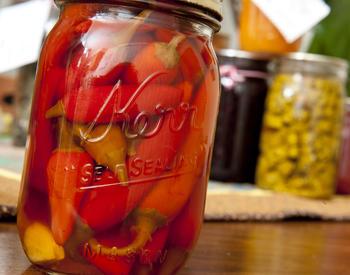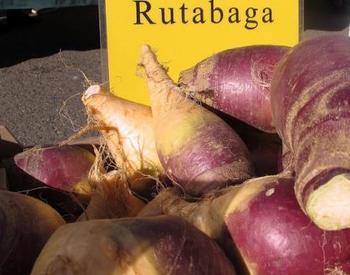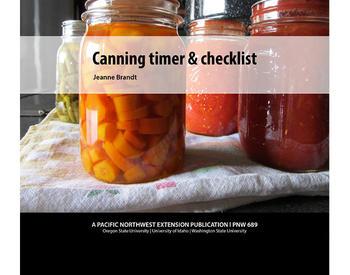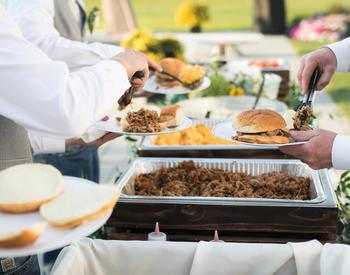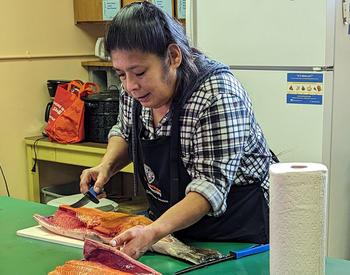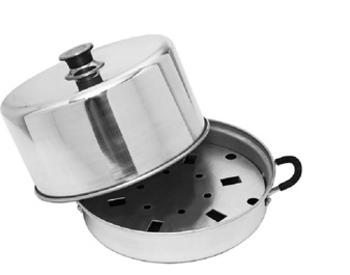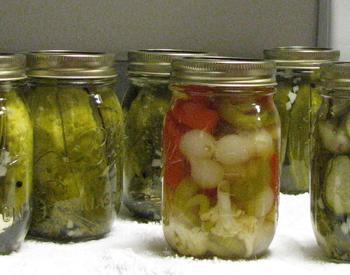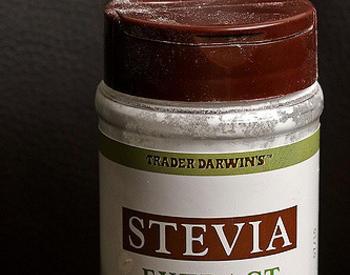Download this publication as a PDF
Summer sausage can be successfully made at home. Recipes can be adapted to make them leaner than their commercial counterparts. Special seasonings can also be added.
If you plan to grind your own meat, a meat grinder is recommended. Food processors can be used, but have limited versatility since they will only produce a fine grind. Some grinders come with casing attachments. The best casings are from the small intestine of hogs or sheep. Synthetic casings made from collagen or cellulose are also available. They can usually be purchased from butcher shops that make sausage. Sausage can also be shaped and cooked without a casing.
Ingredients
Meat
Sausages will be moister and hold together better if there is some fat in the meat. Regular-grind beef, lamb, pork and chicken work well. Venison and turkey might need a little pork or beef fat added. Mixing leaner meats with ground pork will make a leaner product. The standard recipe usually uses 4 pounds of ground venison or turkey to 1 pound of ground pork. Keep the meat as cold as possible during the entire sausage-making process.
Nonfat dry milk
You can add ¼–½ cup of nonfat dry milk per pound of meat to help hold leaner sausage together.
Nitrates and nitrites
Sodium and potassium nitrite and nitrate (saltpeter) have been added to cured meats for centuries. These additives have several purposes. They preserve the red color of meat; they help to give the distinctive cured flavor; and they inhibit the growth of Clostridium botulinum, the bacteria that causes botulism food poisoning.
Under certain conditions, nitrite can react with amines from protein to form nitrosamines both in foods and in the digestive tract. Some nitrosamines have been found to cause cancer in animals. Because of this concern, less nitrite is now used for commercial meat curing. Extreme caution must be exercised in adding nitrate or nitrite to meats. Home sausage-makers should never use more than the amounts recommended in up-to-date recipes.
Seasonings
Common seasonings are mustard seed, coarsely ground pepper, seasoning peppers (like cayenne, chili or lemon pepper), garlic and small amounts of thyme, oregano, cloves and anise seeds. Seasonings can be varied depending on personal taste. Many premixed seasoning blends can be purchased.
For 1 pound of meat
- 1½ tsp. Morton’s Tender Quick salt1
- ½ tsp. garlic salt
- ½ tsp. coarse black pepper
- ½ tsp. mustard seed
- ¼ tsp. hickory smoked salt or liquid smoke
For 5 pounds of meat
- 2 Tbsp. Morton’s Tender Quick salt1
- 2½ tsp. garlic salt
- 2½ tsp. coarse black pepper
- 2½ tsp. mustard seed
- 1 tsp. hickory smoked salt or liquid smoke
Mixing
Mix all the spices together and sprinkle evenly over meat as you mix it. It’s best to use your hands for mixing. Wearing disposable food-safe gloves is recommended. Wash your hands before putting gloves on, then knead in the spices. Remove gloves and wash hands well after mixing.
Curing
When the spices are thoroughly mixed into the meat, place it in a covered mixing bowl or in a freezer bag. Refrigerate to cure for at least 24 hours. It’s a good idea to knead the meat mixture at least once during the curing time.
Preparing the sausage for cooking
The sausage can be stuffed into purchased casings, cooked in cans, or just hand-shaped. It’s important to keep the diameter of the sausage under 3 inches, 1½–2-inch sausage rolls are common. If not using a casing, it is helpful to roll the sausage in plastic wrap and then roll into an even shape.
Cooking methods
Several methods may be used to cook the sausage: oven, pressure saucepan, or a combination of oven and microwave. The internal temperature of the sausage should reach at least 160°F to be safe. The amount of time needed will depend on the type of meat you are using as well as other factors. Use an oven thermometer to determine the temperature at the end of the cooking period.
Oven
Place the sausage rolls on a broiler rack or on a cooling rack placed in a jelly roll pan. Bake in a preheated 200°F oven for 3–5 hours until the internal temperature of the sausage reaches 160°F. For a drier sausage, continue cooking until the temperature reaches 165°F. Remove from oven. Refrigerate until cool.
Microwave/oven combination
A combination of both the microwave and conventional oven will shorten the baking time and will result in a product more like commercial-style summer sausage. Place the sausage rolls on a microwave-safe roasting (bacon) rack in the center of the microwave. Cook 10 minutes at 30% (defrost) power. Place the partially cooked sausage rolls on a broiler pan in a preheated 200°F oven and continue baking for 1–2 hours or until the internal temperature reaches at least 160°F. Remove from oven. Refrigerate until cool.
Caution: Because many microwaves do not cook evenly, summer sausage should not be cooked solely in the microwave. The microwave/oven combination produces a good quality product.
Sausages should not be cooked in a smoker because the temperature may not be high enough to kill harmful bacteria. They can be cooked in a smoker/cooker/barbecue combination that has a temperature control so that you can regulate and maintain a high enough temperature for safe cooking.
Storage
When thoroughly cooled, wrap sausage in foil or plastic and refrigerate or freeze. Cooked sausage can be stored safely in the refrigerator up to 3 weeks. For long-term storage, it may be frozen. Frozen sausage is best quality if used within 2–3 months.
NOTE: Raw sausage rolls can be frozen. When ready to use, thaw, then cook following instructions for cooking sausage rolls.
Deli-style corned beef or tongue
- 1 beef brisket or tongue, 4–6 lbs.
- 5 tablespoons Morton Tender Quick mix
- 2 tablespoons brown sugar
- 1 tablespoon ground black pepper
- 1 teaspoon ground paprika
- 1 teaspoon ground bay leaves
- 1 teaspoon ground allspice
- ½ teaspoon garlic powder
Procedure
- Trim surface fat from brisket.
- In a small bowl, mix Morton Tender Quick mix, and remaining ingredients, and spices.
- Rub mixture into all sides of brisket or tongue. Place brisket or tongue in plastic bag and tie end securely.
- Refrigerate and allow to cure 5 days per inch of meat thickness.
- Place brisket or tongue in Dutch oven. Add water to cover.
- Bring to a boil; reduce heat. Simmer until tender, about 3 to 4 hours.
Related articles
- Canning Tuna
- Should I Vacuum Package Food at Home?
- Canned Meat, Poultry, and Fish: Problems and Solutions
Source: OSU Master Food Preserver Program
